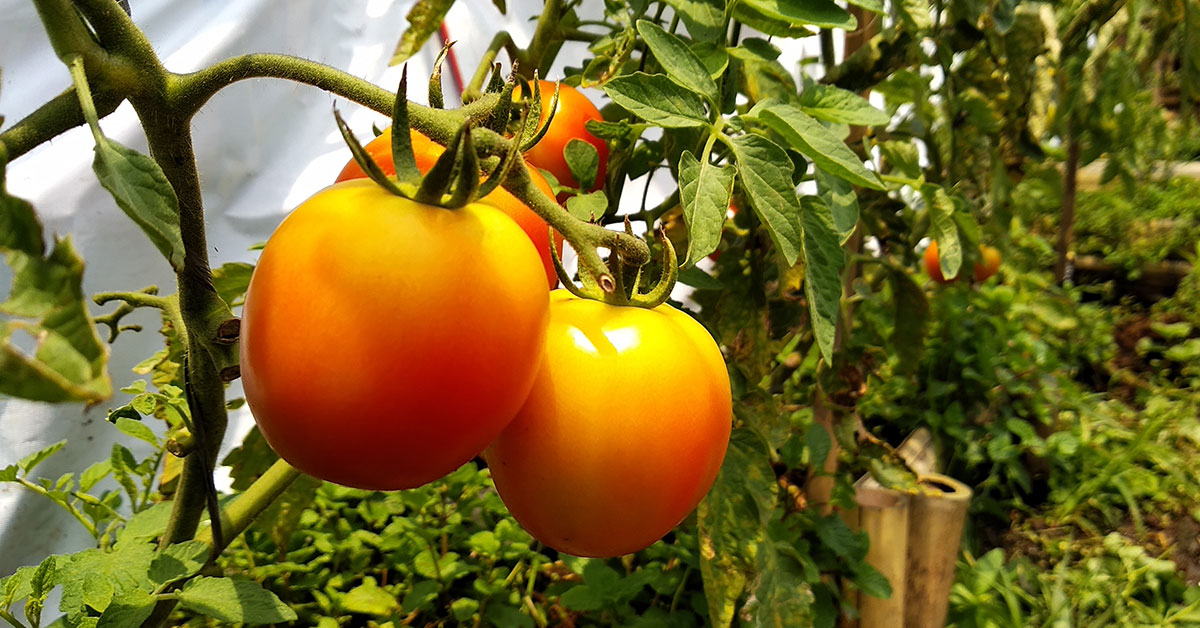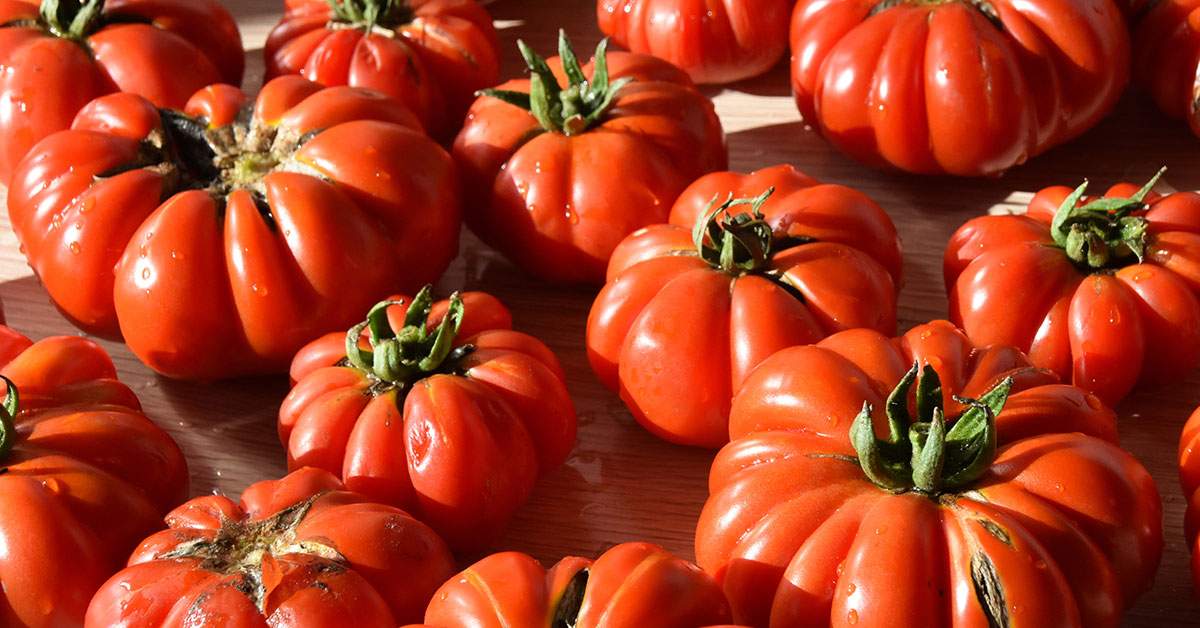The Golden Jubilee tomato is a popular variety of tomato that is known for its vibrant golden color and delicious taste. It was first introduced in the United States in the 1940s and has since become a favorite among home gardeners and commercial growers alike.
With its juicy flesh and sweet flavor, the Golden Jubilee tomato is perfect for salads, sandwiches, and sauces. In this blog post, we will explore the history, characteristics, and growing tips for this golden gem of a tomato.
What is a Golden Jubilee tomato?
Golden Jubilee tomato is a popular heirloom variety of tomato that is known for its beautiful golden-orange color and sweet flavor. It was first introduced to the market in the 1940s and has since become a favorite among gardeners and chefs alike.
The Golden Jubilee tomato is a large beefsteak tomato that typically weighs between 8 and 12 ounces. Its skin is smooth and glossy, and its flesh is thick and juicy. The tomato is known for its rich, sweet flavor and is often used in salads, sandwiches, and sauces.
One of the reasons that the Golden Jubilee tomato is so popular is that it is easy to grow. It is a hardy plant that is resistant to many common tomato diseases, and it produces an abundant crop of fruit throughout the growing season. This makes it an ideal choice for home gardeners who want to grow their own tomatoes.
Overall, the Golden Jubilee tomato is a delicious and versatile tomato variety that is well worth trying out in your garden or kitchen. Whether you are a seasoned gardener or a novice cook, you are sure to appreciate the sweet flavor and beautiful color of this popular heirloom tomato.
How to start Golden Jubilee tomatoes from seed
Starting tomatoes from seed is a cost-effective and rewarding way to grow your own tomato plants. To begin, choose the tomato varieties that suit your preferences and growing conditions.
Fill seed trays or pots with a lightweight and well-draining seed starting mix, plant the seeds at the recommended depth, and provide adequate moisture and warmth for germination.
Once the seedlings have developed their second set of true leaves, they can be transplanted into larger containers or individual pots. Gradually acclimate the seedlings to outdoor conditions before transplanting them into the garden.
By following these basic steps, you can successfully start tomatoes from seed and enjoy a thriving crop of homegrown tomatoes.
Additional Resource: Our comprehensive guide to starting tomatoes from seed
Growing & care
Transplanting and caring for tomatoes outdoors involves a few essential steps. First, choose a sunny location with well-drained soil. Prior to transplanting, harden off the seedlings by gradually exposing them to outdoor conditions.
Dig a hole slightly larger than the root ball of each seedling and plant them, burying the stem up to the first set of leaves. Water the seedlings thoroughly after transplanting. Provide consistent watering, aiming for 1-2 inches of water per week.
Stake or cage the plants for support and prune indeterminate varieties by removing suckers. Monitor for pests and diseases, taking prompt action if necessary. By following these steps, you’ll set your tomato plants up for healthy growth and a fruitful harvest.
Additional Resource: How to transplant and care for tomatoes outdoors
Common tomato pests and diseases
Tomatoes are susceptible to various pests and diseases that can affect their health and productivity. Some common tomato pests include aphids, tomato hornworms, whiteflies, and cutworms. These pests can cause damage to leaves, stems, and fruit, leading to reduced plant vigor and yield.
Additionally, tomato plants can be affected by diseases such as early blight, late blight, fusarium wilt, and verticillium wilt. These diseases can cause leaf discoloration, wilting, and fruit rot. Proper identification and timely intervention are crucial to effectively manage these pests and diseases and ensure the successful growth of tomato plants.
Additional Resource: Comprehensive list of tomato diseases and pests and how to fix them
Common problems
The Golden Jubilee tomato is a beautiful and delicious variety that is popular among gardeners. However, like all tomatoes, it is susceptible to certain problems that can affect its growth and health. Here are some of the most common problems that gardeners may encounter when growing Golden Jubilee tomatoes:
- Blossom End Rot: This is a common problem that affects many types of tomatoes, including Golden Jubilee. Blossom end rot is caused by a calcium deficiency in the plant, which leads to black or brown spots on the bottom of the fruit. To prevent this problem, ensure that the soil is rich in calcium and that the plant is receiving enough water.
- Early Blight: This is a fungal disease that affects the leaves of the plant, causing them to yellow and drop off. It can also affect the fruit, causing it to rot prematurely. To prevent early blight, ensure that the plant is getting enough sunlight and air circulation, and avoid overcrowding.
- Late Blight: This is another fungal disease that affects the leaves and fruit of the plant. It causes brown or black spots on the leaves and a watery rot on the fruit. Late blight can spread quickly and can be difficult to control, so it is important to remove any affected plants immediately and dispose of them properly.
- Tomato Hornworms: These large green caterpillars can quickly decimate a tomato plant, including the Golden Jubilee. They can be difficult to spot, but you may notice large chunks missing from the leaves or fruit. To control tomato hornworms, handpick them off the plant or use a natural insecticide.
- Fusarium Wilt: This is a soil-borne fungal disease that affects the roots of the plant, causing them to rot. It can cause the plant to wilt and die, and there is no cure for this disease. To prevent fusarium wilt, ensure that the soil is well-draining and avoid planting tomatoes in the same spot every year.
By understanding these common problems and taking steps to prevent them, you can enjoy a bountiful harvest of Golden Jubilee tomatoes. With proper care and attention, these tomatoes can thrive and provide you with delicious, juicy fruit throughout the growing season.
Uses
Golden Jubilee tomatoes, as the name suggests, are a type of tomato variety that is known for its golden-yellow color. These tomatoes are typically used for various culinary purposes due to their unique taste and texture. In this section, we will discuss some of the typical uses of Golden Jubilee tomatoes.
One of the most popular uses of Golden Jubilee tomatoes is in sauces and soups. These tomatoes have a slightly sweet taste that adds a unique flavor to the dish. They are also rich in nutrients, making them a healthy addition to any recipe.
Golden Jubilee tomatoes are also commonly used in salads. Their bright color and juicy texture make them an aesthetically pleasing addition to any salad. They are typically sliced into small pieces and mixed with other salad ingredients such as lettuce, cucumbers, and onions.
Another popular use of Golden Jubilee tomatoes is in sandwiches. They can be sliced and added to sandwiches as a healthy and flavorful alternative to traditional sandwich toppings such as cheese or meat. They are also commonly used in wraps and other types of handheld meals.
In addition to their culinary uses, Golden Jubilee tomatoes are also a popular choice for home gardeners. They are relatively easy to grow and produce a high yield of tomatoes per plant. This makes them an excellent choice for anyone looking to grow their own vegetables at home.
Overall, Golden Jubilee tomatoes are a versatile and delicious addition to any kitchen. Whether you are using them in sauces, salads, sandwiches, or growing them in your garden, these tomatoes are sure to add a unique flavor and texture to any dish.













